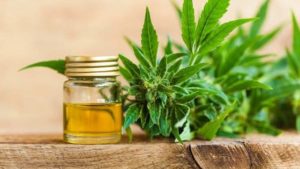
If you are new to CBD—or if you’ve recently heard of Kratom for the first time—you might be wondering how these two natural supplements differ from each other, particularly when you hear Kratom being touted as providing users with a similar host of benefits as CBD.
However, there are more differences between CBD and Kratom than there are similarities. In this guide, we will attempt to provide you with a comprehensive break-down of how CBD and Kratom can be so similar to each other in the benefits that users have reported experience but still be wildly different in almost every way.
Knowing the differences between these two natural products can easily be the difference between getting a product that will actually provide you with whatever the desired effects are, and getting a product that just doesn’t provide you with what you need.
Kratom
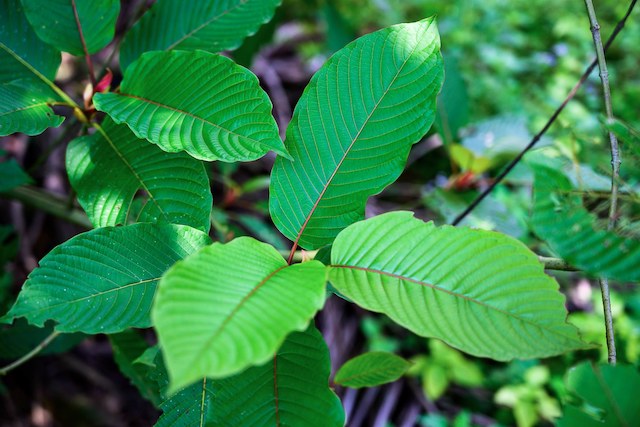
Kratom (scientific name Mitragyna speciosa) is a tropical evergreen tree that is in the coffee family, and which is native to parts of Southeast Asia. Kratom is indigenous to the following Southeast Asian locales: Thailand, Indonesia, Malaysia, Myanmar, and Papua New Guinea.
In these Southeast Asian countries, Kratom has been used in traditional medicines and as an additive to folk remedies in order to treat a wide variety of ailments since at least the early part of the nineteenth century. While you are more likely to hear it being called “Kratom” in the United States, this natural remedy sometimes goes by the following names:
- Biak
- Ithang
- Kakuam
- Ketum
- Thom
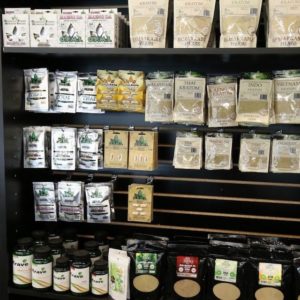
To start with, the way that Kratom acts is different depending on how it is taken, in addition to being dependent on a host of other variables (such as the strain that is used, how much is used, and the individual using it, among others). At low doses, Kratom acts as a stimulant and makes the user feel more energetic and motivated. At higher doses, Kratom is reported to reduce acute and/or chronic pain, and many report that it brings on a feeling of euphoria.
At very high doses, Kratom acts in much the same way as a sedative would, making the users quiet, mentally slow, or it causes them to feel sleepy and/or groggy. In addition to how Kratom behaves at different doses, Kratom is additionally available in three different varieties, which are differentiated by the color of the plant’s leaves.
- Red Vein Kratom: Red Vein Kratom leaves have red-colored stem and veins, and this strain is by far the best selling and most widely available strain of the three Kratom strains that are available on the market today. Red Vein Kratom sees more total sales than Green Vein Kratom and White Vein Kratom combined. Red Vein Kratom is reported to give its users a certain peace of mind, in addition to providing them with a range of different positive mental feelings and outlooks. Red Vein Kratom is also popular as a treatment for insomnia because of the relaxing nature of its effects.
- White Vein Kratom: White Vein Kratom is most commonly used as a stimulant and as a mood enhancer. The White Veins are reported as being the most stimulating and euphoric-inducing of all three Kratom strains. White Vein Kratom is increasingly taken instead of coffee (caffeine) for the mental effects of alertness, concentration, and positivity that regular users of this strain often report.
- Green Vein Kratom: Green Vein Kratom can best be described as having certain qualities of both Red Vein Kratom and White Vein Kratom. Users of Green Vein Kratom have reported that regular use of this strain helps to enhance their mental alertness and focus. Green Vein Kratom is additionally the strain that is most often used for pain management, in part due to the fact that this strain is reported to not come with the feelings of drowsiness that the other two veins are known to sometimes cause.
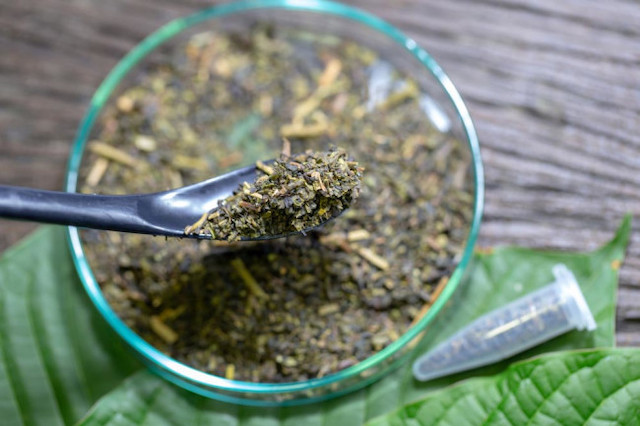
Because of how Kratom behaves depending on the dosage and depending on the specific strain that is used, many people that use Kratom do so for a variety of different reasons. Many of the common uses of Kratom are for managing chronic pain and for treating opioid withdrawal symptoms.
Using Kratom recreationally, however, is becoming more popular recently, due to the feelings of euphoria that moderate doses of Kratom can provide, or due to the stimulating effects that low doses of Kratom can cause. Despite the user-reported benefits of Kratom use, the United States’ Food and Drug Administration (the FDA) stated in 2019 that there is no concrete evidence that Kratom is safe or effective for treating any condition, or for mitigating the symptoms of any ailment.
Research into Kratom’s efficacy and safety for general use or as a therapeutic agent started in 2018, but the results are still unclear as of now due to the fact that the research that has been done on Kratom has been really limited in scope, and the research overall has been of very poor quality and does not meet the current standards that are widely agreed upon in the scientific and healthcare communities.

It is mainly due to these specific factors that Kratom is currently listed as being a controlled substance in at least 16 countries worldwide, and in 2013 resulted in the FDA outright banning the importing and the manufacturing of Kratom specifically as a dietary supplement.
Additionally, in certain places all over the world, the sale and importation of Kratom have been restricted at varying levels of strictness, and with various stipulations in place on who can buy Kratom and for what use. Because of how unclear the efficacy and safety of Kratom is, a handful of public health authorities have voiced their concerns over the use of Kratom for recreational uses and for healthcare uses over the past couple of years.
There has been a handful of reported negative side-effects associated with the use of Kratom, including (but not limited to) the following: loss of appetite, erectile dysfunction, hair loss, constipation, tachycardia (high heart rate), hypertension (high blood pressure), changes in regular sleep cycles (insomnia and waking still feeling tired), liver toxicity, respiratory depression (a marked decrease in breathing), seizures, addiction/dependency, and (rarely) symptoms of psychosis.
These are just user reported negative side-effects, and—as such—should not be taken as a definitive list of possible side-effects, nor should it be taken at face-value as side-effects that can definitively be linked with the use of Kratom, as some users might have underlying health problems that they are not aware of, there could be undocumented interactions with various medications or some reported side-effects could have just been coincidental instead of being a product of causation.
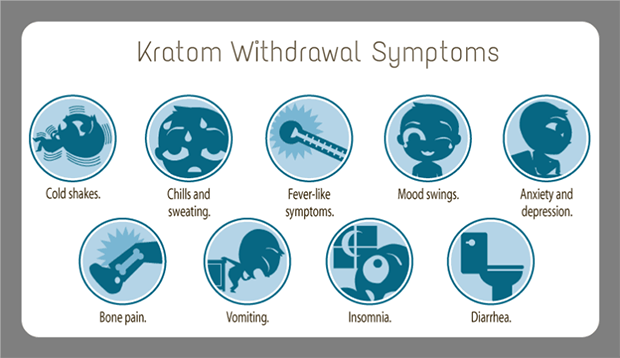
Another thing that is of note is that because addiction and / or dependency on Kratom is one of the reported possible side-effects of regular Kratom use, this can—and often does—lead to the user experiencing opioid withdrawal symptoms after cessation of Kratom use.
These withdrawal symptoms are reported as basically being the same to the withdrawal symptoms that are felt as a result of opioid addiction (these symptoms commonly include the following at various severity levels: anxiety, nausea, vomiting, and / or acute or generalized abdominal pain), which is likely due to the fact that Kratom produces opioid-like effects on the user’s body and brain.
Regardless, Kratom use is steadily increasing in popularity, and can often be found being sold in a variety of specialty shops around the United States and worldwide, where legal. Kratom’s popularity can potentially be linked with some of the user-reported benefits of Kratom use (namely the reduction of the effects of chronic or acute pain, a as a more natural treatment for mitigating the effects from opioid withdrawal, or as a supplementary treatment option for ), and the fact that the onset of effects typically begins within five to ten minutes after introducing Kratom into the system, and lasts for two to five hours, making Kratom a fast-acting and long-lasting product.

In addition to users reporting that Kratom helps to reduce the symptoms that they feel due to the effects of opioid withdrawal and as a supplementary medication used in Opioid Replacement Therapy, Kratom is also commonly used for general acute and/or chronic pain that is the result of a variety of different illnesses and ailments, such as bodily trauma (like you might suffer after an accident), Rheumatoid arthritis, osteoarthritis, fibromyalgia, neuropathy, Irritable Bowel Syndrome (IBS), Inflammatory Bowel Disease (IBD), and others.
Kratom is also commonly used as a stimulant in an effort to achieve feelings of euphoria, an overall sense of well-being, and general positivity. Each of these different benefits of Kratom use are all user-reported benefits, and each of the side-effects that we covered earlier in this guide (in the Kratom-specific section) are all user-reported unintended/undesired effects.
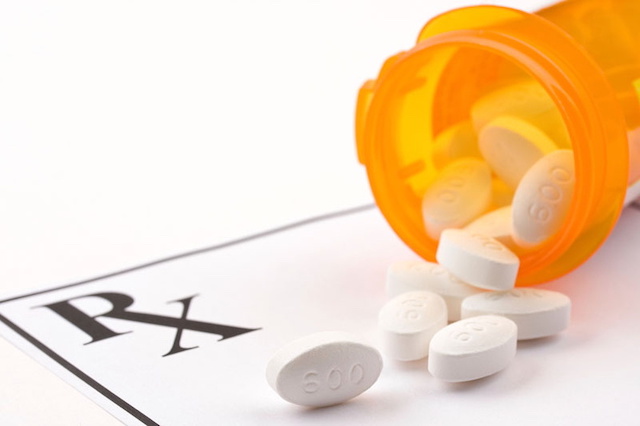
Kratom as a natural alternative to traditional pharmaceutical medications for treating opioid withdrawal and for treating what is known as Opioid Use Disorder (OUD), which is a pattern of opioid abuse that causes significant impairment or distress in the OUD sufferer, and which presents itself with the following symptoms: a strong and undeniable desire to use opioids, an increased tolerance to the effects of opioid use, difficulty fulfilling obligations such as their job or familial obligations, trouble reducing the overall use of opioids, and experiencing withdrawal syndrome with the discontinuation of opioid use.
Managing opioid addictions and mitigating the effects of opioid withdrawal are both incredibly important. From July of 2018 to July of 2019, there were a reported 67,136 deaths in the United States that were a direct result of opioid overdoses, according to the Centers for Disease Control (CDC)’s analytical data. Opioid overdoses are currently an epidemic in the United States.
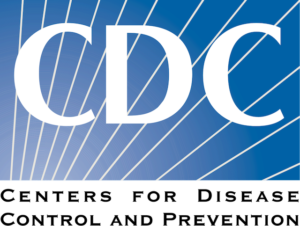
The CDC analyzed data from 27 states during July of 2016 to December of 2017 and found that there were 27,338 overdose deaths that occurred during the study timeframe within those 27 states.
In comparison to these findings, from July 2016 to December 2017, the State Unintentional Drug Overdose Reporting System (SUDORS) reported that there were only 152 overdoses (in total for the 27 states that were studied) where the individual had Kratom present in their system at the time-of-death, according to comprehensive toxicology reports.
Of these 152 cases of drug overdoses, Kratom was only thought to have potentially played a role in the patient’s death in only 91 of the cases. Studies like this in addition to Kratom users ‘ reported experiences with Kratom use help to illustrate how Kratom can be used to fight against the opioid epidemic.
As for how opioid addiction is currently treated in mainstream medicine, there’s a handful of methods and medications used for dealing with opioid addiction and the effects of opioid withdrawal. Each of the currently used methods has its own success rates, and some of what is currently used might not be viable or a desirable method, depending on the affected individual in question.
The fact that Kratom is a natural alternative (or is a natural supplement) to what is currently used appeals to many of the regular users of Kratom. Some of the “mainstream” medications or methods for treating opioid withdrawal each have their own pros and cons in comparison to Kratom, and in comparison to each other. Some of the regularly recommended treatment options for those that are suffering from Opioid Use Disorder include:
1. Abstinence / Quitting “Cold Turkey”:

Abstaining from opioid use (commonly known as going or quitting “Cold Turkey”) simply means that an opioid user stops using opioids and lets their body naturally rid itself of the opioids that stay present in a user’s system.
Opioids all have short half-lives, with the half-life for most opiates ranging from between one to nine hours after first being introduced into the body. Opioid withdrawal commonly starts within 6 to 12 hours after being introduced into the body for short-acting opioids, and the effects of opioid withdrawal normally peak within 72 hours after the last dose of opioids, and the total withdrawal time for an average opioid-dependent person is around 7 days.
Because of the physical and mental effects that opioid withdrawal causes, and because of the total time that an opioid-dependant individual will spend going through the withdrawal process, this treatment approach is rarely successful and it has a high relapse rate.
The previously mentioned time frames for how quickly an opiate leaves the system can be complicated by a variety of different variables, such as:
- The individual’s metabolism rate;
- The individual’s body mass and total weight;
- Their body fat content;
- The health of their liver and their kidneys;
- The individual’s age;
- How often and how heavily the opiate in question is used;
- The overall quality of the opioid, and;
- The total amount of water in the individual’s body.
These variables, among others, can lead to a variety of complications from opioid withdrawal, and can easily make dealing with opioid withdrawal even more difficult for the individual. Considering how difficult and painful opioid withdrawal is already, anything that prolongs or exacerbates the detoxification process is just going to compound the issue further.
Quitting opioid use Cold Turkey just is not a viable option in most cases for a large majority of those that are suffering through Opioid Use Disorder. It’s because of this that most healthcare professionals will choose to use the next technique as a treatment option for dealing with Opioid Use Disorder and opioid withdrawal symptoms.
2. Opioid Replacement Therapy (ORT):
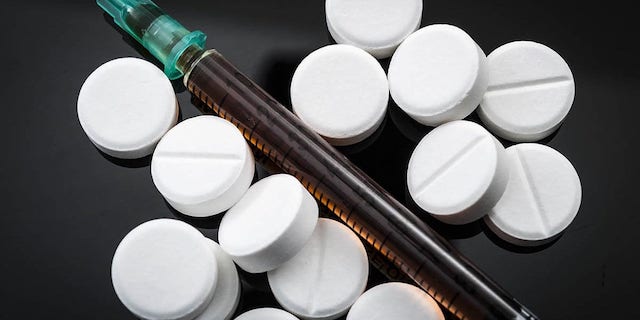
Opioid Replacement Therapy is the treatment approach of prescribing an opioid-dependant patient with a less harmful opioid than the one that they are currently addicted to. The commonly prescribed opioids are often longer-lasting medications but produce a less euphoric “high” than opioids that are common among opioid addicts, such as heroin, OxyContin, or Vicodin.
Opioid Replacement Therapy often sees very favorable results. Approximately 40–65% of patients that are undergoing Opioid Replacement Therapy maintain abstinence from additional opioids while they are receiving the Opioid Replacement Therapy, and a further 70–95% of those patients can reduce their use of more dangerous opioids significantly. There’s a number of different medications that are commonly used in Opioid Replacement Therapy; these preferred medications are:
Methadone:
Methadone is an opioid that is used for Opioid Maintenance Therapy and is used for chronic pain management. The side-effects of Methadone are similar to other abused opioids—such as dizziness, sleepiness, vomiting, and sweating, as examples—but these side-effects are often not felt when taking Methadone at recommended dosages. Methadone is used for Opioid Replacement Therapy in one of two ways: maintenance or detoxification. The first method is where Methadone is used as a complete replacement for other opioid addictions.
The latter method is where Methadone is used in such a way as to slowly wean the opioid-dependant patient from opioid addiction by methodically lowering the dosage of the medication, thus reducing the felt effects of opioid withdrawal until the patient is no longer dependent on opioids. Brand names for Methadone in the United States include Diskets Dispersible, Dolophine, Methadone HCl Intensol, and Methadose.
Buprenorphine:
Buprenorphine is an opioid that is commonly used to treat Opioid Use Disorder, as a medication for Opioid Replacement Therapy, to treat acute pain, and to treat chronic pain. The combination formulation of Buprenorphine / Naloxone (which is branded as Suboxone) is recommended to discourage misuse by injection.
The peak of pain relief is generally felt within one hour after introducing it into the system, and the effects last up to 24 hours in total. Brand names in the United States for Buprenorphine include Suboxone, Bunavail, and Zubsolv.
Naltrexone:
is generally only used as an opioid for Opioid Replacement Therapy. An opioid-dependent person should not be prescribed or receive Naltrexone before opioid detoxification has completed, which is why Naltrexone is not used as the first line of defense drug for Opioid Replacement Therapy. Brand names for Naltrexone in the United States are Vivitrol, Revia, and Depade.
Dihydrocodeine:
Dihydrocodeine is a semi-synthetic opioid analgesic that is commonly prescribed for pain management, severe dyspnea (shortness of breath / SOB), in Opioid Replacement Therapy, and as an antitussive (a medication used to treat the common cold, coughs, and related symptoms or illnesses), either alone or compounded with Paracetamol (Acetaminophen / Aspirin).
Dihydrocodeine is commonly used as a replacement drug for codeine, and as with codeine, intravenous administration of Dihydrocodeine should be avoided, as it could result in anaphylaxis (a severe and life-threatening allergic reaction response) and life-threatening pulmonary edema (which is a build-up of fluid in the lungs).
3. Kratom:
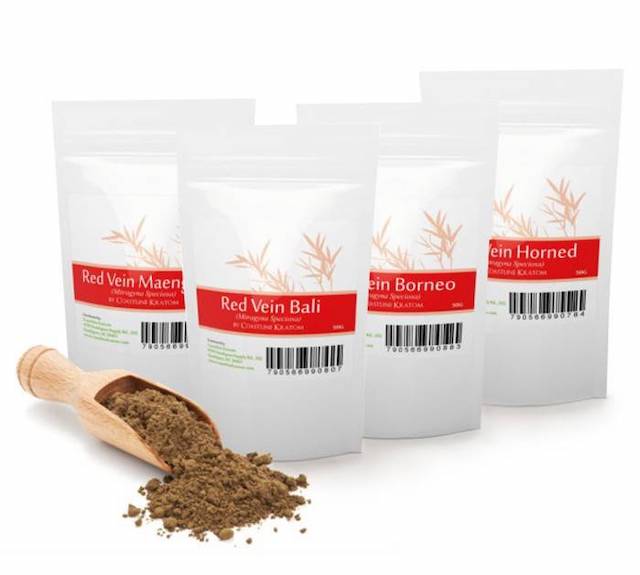
Using Kratom as a method of treating Opioid Use Disorder or as the first line-of-defense medication (or as a supplementary medication) in Opioid Replacement Therapy is currently the only natural method that is available that has a potential for being effective.
The downside to turning to Kratom for one of these reasons is the fact that there is currently very little research that has been done on the overall efficacy and safety of regular Kratom use, and even less research has been done on the overall efficacy and safety of Kratom use specifically for treating OUD or as a part of ORT.
The previously listed medications that are commonly used in ORT are at least well understood, with each of them having been discovered and heavily researched since their discoveries for many years; Methadone was developed in 1937, Buprenorphine was developed in 1969 after ten years of clinical tests, Naltrexone was first synthesized in the year 1963, and Dihydrocodeine was first developed in 1908.
While Kratom might provide you with a certain desired effect—and just because you might not feel any negative side-effects from Kratom use—that doesn’t mean that Kratom is wholly safe, and we likely won’t know exactly how Kratom works and the entirety of the impact that Kratom use can cause for a number of years yet. Because of this, using Kratom for medical reasons that are less life-altering or dangerous as severe chronic pain or as a part of Opioid Replacement Therapy along with following a doctor-approved management plan, we do not recommend that our readers take Kratom without first understanding and weighing the pros and the cons of Kratom use and deciding from there.
Outside of the handful of uses that we have listed that Kratom users regularly use Kratom for, Kratom doesn’t seem to have strong evidence of any other user-reported or scientifically noted uses or impacts (both beneficial or negative) on users. However, Kratom—as we have already detailed in this section—seems to have a very respectable use in dealing with the effects of opioid withdrawal, as a way to help mitigate the effects of Opioid Use Disorder, and as a potentially useful supplement in Opioid Replacement Therapy.
If your desire is to be helped with one of these issues, we highly encourage you to seek professional help and counseling and to speak to your Primary Care Physician (PCP) about introducing Kratom into your treatment plan.
Various Methods of Using Kratom:
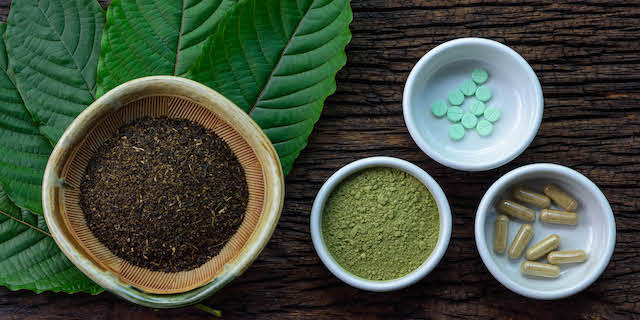
It is fairly rare to find Kratom for sale in many different forms or product types, most likely due to the fact that Kratom use is still fairly new for mainstream consumers. Because of this, Kratom is most commonly taken in the following ways:
- As a pill or a capsule;
- Chewing Kratom leaves;
- Brewing dried or powdered Kratom leaves into a tea;
- Smoking the Kratom leaves, and;
- Using Kratom leaves as an added ingredient in cooking or baking.
However, keep in mind that Kratom pills and capsules are the most common ways that Kratom is sold in the specialty shops which are located in states where the sale of Kratom is legal. These specialty shops (such as vape stores and “head” shops) have only fairly recently begun to carry Kratom products, to begin with, so the lack of variety in regards to Kratom products isn’t too surprising.
The Legality of Kratom in the United States:
The legality of Kratom in the United States depends wholly on the state in question, as it does not have any Federal laws restricting or allowing the sale of it. Because there is not a Federal law relating to the sale, use, or possession of Kratom, its legality is handled on a state-by-state basis.

Out of the 50 states in the United States, there are six states where Kratom is illegal, and there are 18 states that at the time of writing that have pending legislation that seeks to limit Kratom sales in some way or to outright make Kratom illegal in those states.
Out of the remaining 26 states, there are a further three states where the sale of Kratom is either illegal or is strictly regulated in some way within a specific area within those states (such as within a specific city’s limits or within a county).
Two of the 18 states with pending legislation relating to the sale of Kratom also have cities where the sale of Kratom is already illegal or restricted in some way within their respective city limits. Aside from the 50 states, Kratom sales are currently legal within the District of Columbia (Washington D.C.).
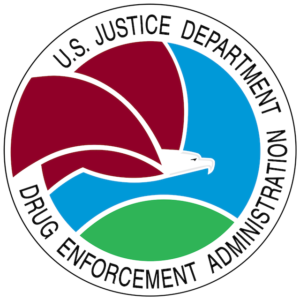
In 2016, the Drug Enforcement Agency (the DEA) announced its intent to classify Kratom as a Schedule I (meaning a drug that has a high potential for abuse, provides no medical benefits and is unsafe to use without close medical supervision; other drugs that are classified as Schedule I include marijuana, some stimulants, and many opioids) Federally regulated substance, which would have prohibited the sale, use, and possession of it across the nation.
This classification would have been temporary, at least at first, and would have been done because the DEA considered the situation at the time to be an “emergency” because of how concerned the Agency was in regards to the safety of Kratom, and because of the potential for abuse. The DEA ultimately decided to reverse their decision to seek classifying Kratom as a Schedule I drug because of the public backlash that they faced at the time, including petitions, public protests, and calls to Congress members.
- States Where Kratom Sales are Legal: Alaska, Arizona*, California*, Colorado*, Connecticut, Delaware, Florida*, Georgia*, Hawaiʻi*, Idaho, Illinois*, Iowa, Kansas*, Kentucky, Louisiana*, Maine, Maryland*, Massachusetts, Michigan*, Minnesota, Mississippi*, Missouri*, Montana, Nebraska, New Hampshire*, New Jersey*, New Mexico, New York*, North Carolina, North Dakota, Ohio*, Oklahoma*, Oregon*, Pennsylvania*, South Carolina, South Dakota, Tennessee, Texas, Utah, Virginia*, Washington, West Virginia, and Wyoming.
- States Where Kratom Sales are Illegal: Alabama, Arkansas, Indiana, Rhode Island, Vermont, and Wisconsin.
- City-Specific / County-Specific Areas Where Kratom is Illegal: San Diego (California), Denver (Colorado; for human consumption), Parker Town (Colorado), Monument Town (Colorado), Sarasota County (Florida), Jerseyville City (Illinois), Franklin City (New Hampshire), numerous cities and counties in Mississippi.
- States Attempting to Enact Kratom-Specific Legislation: Georgia, Hawaiʻi, Illinois, Kansas, Louisiana, Maryland, Michigan, Mississippi, Missouri, New Hampshire, New Jersey, New York, Ohio, Oklahoma, Oregon, Pennsylvania, and Virginia.
*Kratom is currently legal in these states, but each has pending legislation that would affect the sale of Kratom in some way. As such, these states show up in two categories.

**Please note that these three lists are currently up-to-date as of the time of writing, but that does not mean that the legality of Kratom sales for your specific state will reflect these groupings in the future as state laws may have been changed in some way after this guide has been published.
CBD
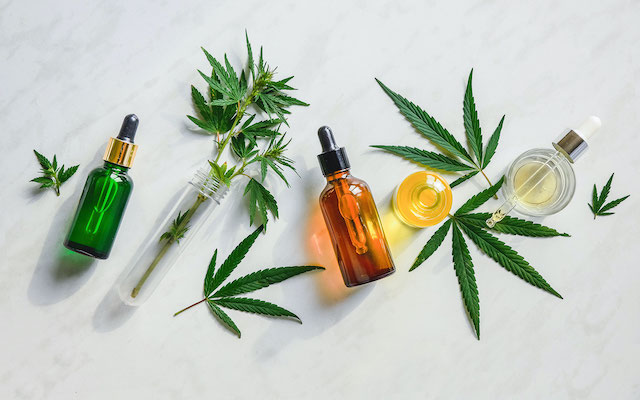
If you are one of our long-time readers, you are likely very familiar with CBD, however, we would like to provide an overview of CBD here for our new readers, and just for the sake of ease for quick comparison between Kratom and CBD.

Research into potential benefits of the use of this specific phytocannabinoid which is commonly known as “CBD” has been ongoing ever since it was first discovered in 1940 (its discovery was a direct result of studying Minnesota-native wild hemp and Egyptian Cannabis Indica resin), and many of the properties of the chemical compound and of the numerous pharmacological uses of CBD have been well documented and are fairly well understood today.
CBD’s International Nonproprietary Name, or the INN, is Cannabidiol, and it is one of the 113 currently identified cannabinoids that we know to be present in the cannabis (marijuana/hemp) plant. CBD on its own accounts for up to 40% of the cannabis plant’s total phytocannabinoid makeup by volume. CBD is utilized for a variety of different things in your body by what is known as the Endocannabinoid System (ECS) in a variety of different ways after it is dispersed through your body via your brain and your Central Nervous System (CNS). The Endocannabinoid System is a biological system that is expressed throughout the central nervous system (including the brain) and throughout the peripheral nervous system.
The Endocannabinoid System is known to be responsible for / be a contributor to various biological activities. The Endocannabinoid System has strong evidence that it is involved in regulating physiological and cognitive processes at varying levels, including fertility, various activities of the immune system, appetite, the processes of pain-sensation, mood, memory, and in mediating the various pharmacological effects of cannabis and cannabinoids, including phytocannabinoids and synthetic cannabinoids.
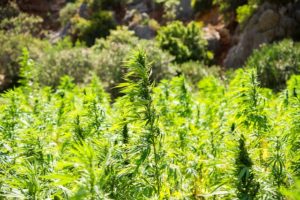
Whereas Kratom is listed as being classified as a controlled substance in at least 16 countries worldwide and is a natural agricultural cultivar which is heavily regulated and restricted by the FDA in the United States, CBD-based products are completely legal and are readily available in the United States, and have been ever since The Hemp Farming Act of 2018 was signed into Federal law in December of 2018.
This bill’s intent was to provide for the reform and for the continuation of agricultural and other related programs of the Department of Agriculture through the fiscal year 2023 and to Federally legalize the cultivation, distribution, and the ownership of CBD-derived and CBD-based products that have been extracted from Federally regulated industrial hemp sources and which contain ≤ 0.3% of the phytocannabinoid THC by total product volume. Because of this new law, industrial hemp had its classification as a Schedule I controlled substances removed, thus making it an ordinary (and completely legal) agricultural commodity.
This particular bill was signed into law in part because of how well understood CBD is as a chemical compound, and how strong the scientific and medical evidence there is supporting CBD as having tremendous medical relevance for treating or mitigating the effects of a variety of illnesses and / or ailments.
CBD has been proven through various medical research tests and by an incredibly large amount of anecdotal evidence from CBD users that regular CBD use can help in a wide-variety of different ways, such as helping with stress, promoting healthier heart function and helping to reduce heart disease risks, improving your overall sleep at night, and as a way to mitigate both acute and chronic pain caused by various illnesses or physical traumas, among many others.
CBD has a strong track record of being available in a variety of products in order to provide CBD users with a range of flexible and distinct CBD products. Additionally, CBD is well-known for being the star ingredient in numerous products that have been specifically formulated to provide users with quick and potent relief for a variety of different issues and health problems.
As an example, CBD-based foods and beverages were first marketed as early as 2017 in the United States, and has since exploded in popularity, meaning you can easily find things such as CBD-infused coffees and CBD-infused chocolates, among a wide range of different kinds of snacks and other beverages. There’s also a large number of reputable CBD manufacturers that cultivate terpenes-dense and phytocannabinoid-rich industrial hemp (which is almost always 100% organic) in order to expertly craft their numerous high-quality CBD products.
While we are speaking of terpenes-dense and phytocannabinoid-rich industrial hemp, it’s very important that CBD users all understand what exactly terpenes are and why it is so important that your CBD-based product be rich in a variety of phytocannabinoids, meaning that there are numerous phytocannabinoids that can be found in your product and that the phytocannabinoids that are present in the product are available in higher concentrations overall.
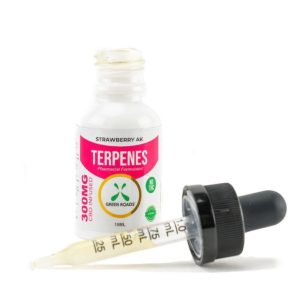
First, we should cover terpenes. Terpenes are a very diverse group of organic compounds which are produced by a number of biologically diverse plants (in particular coniferous plants such as pine trees, Juniper trees, and spruce trees; the division Pinophyta—which is what coniferous plants are members of—contains an estimated eight families, 68 genera, and 629 different living species) and by a number of insects.
Terpenes and terpenoids are the primary constituents of essential oils that are produced by many plants and flowers. It’s because of this that terpenes are often an important part of aromatherapy. To date, we have identified at least 120 different terpenes that are present in Cannabis Sativa plants.
The overall presence of terpenes and in what ratios is one of the main contributing factors in how marijuana and CBD-based products taste and smell. Terpenes are classified by the number of isoprene units in the molecule, and these groupings in order of fewest (1) to the largest number of isoprene units (8) are:
- Hemiterpenes
- Monoterpenes
- Sesquiterpenes
- Diterpenes
- Sesterterpenes
- Triterpenes
- Sesquarterpenes
- Tetraterpenes
Additionally, there are two further groupings of terpenes: Polyterpenes (which are terpenes where there are many isoprene units present in the molecule) and Norisoprenoids (which are terpenes that can be produced by fungal peroxidases or by glycosidases).
As for why it’s important to buy CBD products that are rich in a variety of phytocannabinoids, it boils down to what is known as the “Entourage Effect” by industry leaders and CBD advocates.
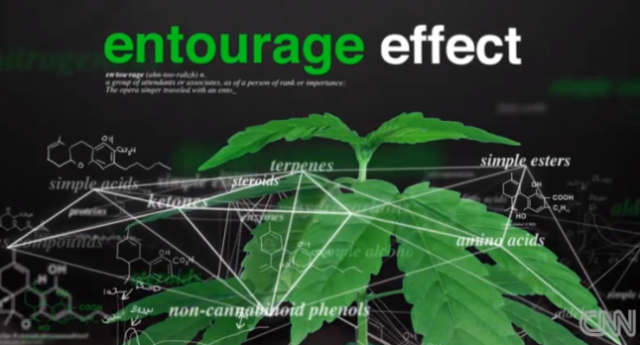
The Entourage Effect is where each present phytocannabinoid works in tandem with each other present phytocannabinoid, which drastically boosts the efficacy of each phytocannabinoid, leading to an overall increase in the CBD product’s efficacy and potency.
These phytocannabinoids are extremely important and are responsible for the numerous different health benefits that regular CBD use often provides to users.
CBD and THC (tetrahydrocannabinol / Δ-9 THC / Delta-9 THC) are the two phytocannabinoids that most people are familiar with, but numerous other phytocannabinoids are extremely important, such as Cannabichromene (CBC), Cannabigerol (CBG), Cannabicyclol (CBL), Cannabinol (CBN), and Cannabidivarin (CBDV), among others. By using a CBD-based product that is rich and diverse in phytocannabinoids, you’re ensuring that you will be getting the best possible result from your CBD use.
We have a guide available which covers the various phytocannabinoids that are found in the cannabis plant in a more detailed and in-depth manner, but in order to keep this guide as comprehensive as possible we will provide a very short overview of a small selection of some of the more important (not including THC or CBD) phytocannabinoids here:
- Cannabichromene (CBC): CBC is a more minor constituent of cannabis plants but is a separate phytocannabinoid source of many of the beneficial properties of CBD, such as pain relief and relaxation.
- Cannabidiolic Acid (CBDA): CBDA is the acidic precursor to the more commonly used CBD, and its presence in a CBD product provides the user with many of the same benefits as CBD, such as reducing inflammation, pain relief, mood-enhancing, and helping with having a more restful night of sleep.
- Cannabigerol Acid (CBGA): CBGA is one of the minor constituents of the cannabis plant and it acts as the parent molecule from which THCA (tetrahydrocannabinolic acid), CBDA (Cannabidiolic Acid), and CBCA (Cannabichromenic Acid) are formed.
- Cannabinol (CBN): Cannabinol—not to be confused with the more common Cannabidiol / CBD—is known to have shown clinical evidence of having various positive properties, such as causing a feeling of euphoria, reducing inflammation, providing overall pain relief from both acute and chronic pain sources, overall improvement to mood and outlook on life, helping with appetite and digestion, and helping with insomnia.
- Tetrahydrocannabinolic Acid (THCA): Tetrahydrocannabinolic Acid is a precursor chemical compound to the more commonly found THC, and it provides many of the same effects, such as causing feelings of euphoria and elation, making users drowsy, and boosting the user’s appetite.
These phytocannabinoids, in addition to many others that are present in cannabis plants, all have a lot of overlap with each other in regard to the specific benefits that each is known to provide. Because this overlap exists, it just compounds the end result, meaning that a phytocannabinoid-rich product will likely provide a more potent overall boost to your health than a CBD-derived product that has fewer phytocannabinoids present or are present in smaller amounts.
Because of how well understood CBD is, and the wide variety of different ailments and health problems that CBD use can cure, mitigate, or help to prevent, we highly recommend to any of our readers that are new to CBD to do some research into what CBD-based products can do for you, and to try a CBD product that might be able to provide you with your desired outcome.
Various Methods of Using CBD:
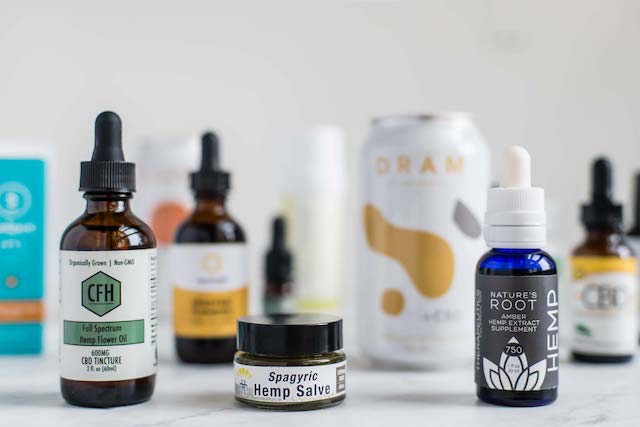
CBD-based products come readily available in a wide variety of different product types. CBD is most commonly taken in the following ways:
- As a pill or as a soft gel capsule;
- Chewing CBD flowers;
- Brewing dried or powdered CBD flowers into a tea;
- Smoking the flowers or vaping CBD vape juice;
- Using CBD flowers as a part of cooking.
- As a topical lotions, salves, or balms;
- As hygiene-oriented or beauty care products, such as soaps or bath bombs;
- As an ingredient in edibles, such as gummy candies or chewing gums;
- In a CBD-infused water;
- As an ingredient in aromatherapy, such as in essential oils or candles;
- As an additive to pet care products for promoting pet health, and;
- Many, many other exciting and innovative ways.
The Legality of CBD in the United States:

The Hemp Farming Act of 2018, which was a Federal agricultural bill that was signed into law in December of 2018 protects the cultivation, manufacturing, distribution, sales, and the possession of CBD and CBD-based products, as long as they were sourced from industrial hemp and as long as they contain ≤ 0.3% of Tetrahydrocannabinol (THC) by total product volume.
This requirement is due to the fact that THC is still a controlled substance (Classified Schedule II as Syndros and Schedule III as Marinol, both of which are man-made forms of cannabis and have different medical uses).
By having ≤ 0.3% of THC by volume in a product, users will not suffer any of the psychoactive effects that are commonly associated with THC use; in other words, ≤ 0.3% of THC is not enough to cause a user to experience a feeling of being “high”, or any other effects that are deemed by many governments around the world to be dangerous or to negatively impact/impair the user in some way.
Thanks to The Hemp Farming Act of 2018, you don’t have to worry about the legality of your CBD product, which as a bonus also makes purchasing CBD products online or in your local specialty smoke / “head” shops fast and convenient. Because CBD must comply with various Federal and State regulations in order to be considered safe for human consumption and / or use, you can also rest easy knowing that CBD products that are purchased from reputable CBD manufacturers will be of a certain amount of quality, potency, and purity.
CBD products are also very consistent in their quality because CBD products often undergo strict third-party laboratory batch testing, which means that a CBD product is chosen for rigorous testing out of a “batch” or a grouping of CBD products that were manufactured within a specific time-frame. CBD manufacturers have to comply with a lot of different rules and regulations, even though CBD itself is Federally legal. This is all for the safety of citizens of the United States.
Conclusion
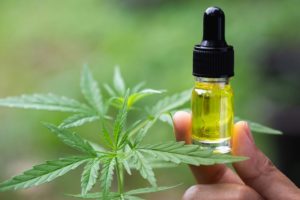
While both of these products which have garnered a lot of attention and popularity in the past couple of years each have their uses and associated pros and cons, we hope that our guide detailing the differences between both Kratom and CBD has been informative for you and will help you in making choices in regards to your health (physical, mental, and emotional) in the future.
Many users of Kratom swear by it, but the bottom line is that Kratom isn’t very well understood in the medical and scientific communities as of now. Kratom has specific uses that might be able to provide you with a more potent and faster-acting solution to certain healthcare issues, but for promoting more general positive well-being, we recommend that you try a CBD regimen before turning to a product that we currently do not know a lot about.
A CBD-based product would be the product that we would first recommend for things such as treating or managing acute or chronic pain, as a mood enhancer, as a sleep aid, and for a variety of other positive benefits that we currently have scientific evidence of and that the medical community recommends CBD be used for; either as a treatment or—as is more often the case—as a supplement to a doctor-approved treatment plan.
On the other hand, Kratom has shown significant promise as a way to help those that are suffering from Opioid Use Disorder (OUD), or as a supplement to an Opioid Replacement Therapy plan, which is why we recommend talking to your Primary Care Physician about possibly introducing Kratom into your healthcare plan, either by itself or in addition to a CBD-based product.

Finally, whether you even have the option to choose between trying out Kratom or trying out a CBD-based product could be wholly dependant on which state in the United States you live in, as the legality of the sale of Kratom differs from state to state.
Also, many states where the sale of Kratom is currently legal each have their own regulations and restrictions that have been put in place in regards to Kratom, such as disallowing the sale of Kratom to those under the age of 18, as an example.
As we detailed earlier in this guide, the sale and use of CBD is legal and protected under a Federal law that was signed into law in 2018 (The Hemp Farming Act of 2018), whereas the legality of Kratom varies from state-to-state at present. The availability of CBD in comparison to Kratom is likely to be largely due to the fact that CBD and the effects of CBD are much more understood when compared to what we currently know about Kratom.
Even if Kratom does not have many negative side-effects that we know of now, that doesn’t mean that it might not have a large impact on long-term users, as we know even less about the risks and outcomes of long-term Kratom use than we do about the effects of casual Kratom use. Long-term and casual CBD usage, on the other hand, is understood very well, as it has had research and case studies spanning decades.
Resources:
- The Centers for Disease Control (CDC)’s Kratom Overdose Study
- The Centers for Disease Control (CDC)’s Opioid Overdose Information
- The World Health Organization (WHO)’s Opioid Overdose Fact Sheet
- U.S. Department of Health and Human Services (DHHS)’s Opioid Information
- U.S. Food and Drug Administration (FDA)’s CBD Page
